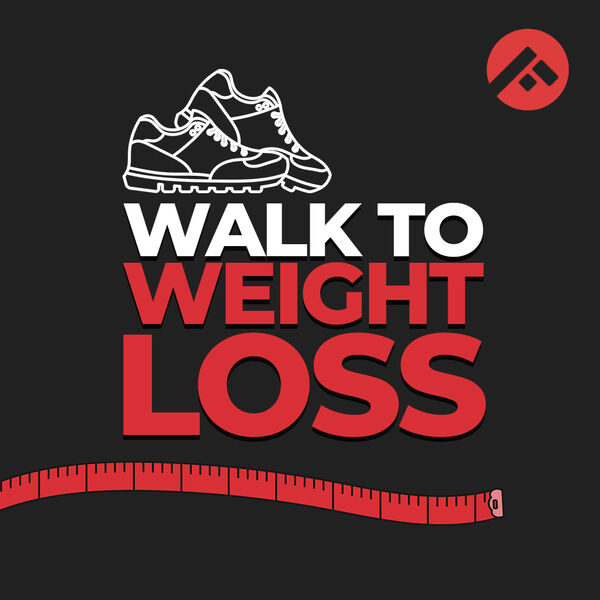
Can Walking Help In Weight Loss?

Exercise or physical activity is essential for a fit and healthy life, and even more so if your schedule is sedentary. The American College of Sports Medicine guidelines recommends that you get at least 30 minutes of moderate-intensity aerobic exercise five days every week. It is well established that physical activity goes a long way to reducing the risk of lifestyle diseases such as hypertension, diabetes, cardiovascular disease, obesity, and so on. Walking is an excellent form of moderately intense physical activity. It is the easiest form of exercise to incorporate into your daily activities, and walking for weight loss is indeed, quite popular.
How does walking help in weight loss?
So, can you really lose weight by walking? The answer is yes. You have to achieve a negative energy balance in order to lose weight. This means that the amount of calories you consume through eating should be less than the total energy burnt by the body.
The amount of energy burnt by the body has two major components — the amount of energy you burn at rest and what you burn doing other daily activities, including exercise. The amount of energy you burn at rest will vary depending on age, sex, body composition, and genetics. So, the only factor that you have under immediate control is how much you exercise every day.
When we exercise, we burn both carbohydrates and fat. However, the amount of each substrate burnt depends on the intensity of exercise. When the intensity is low, we burn a larger amount of fat, and when it is high we burn more carbohydrates. At around the midpoint, which is moderate intensity, it can be seen that we burn a mix, but the predominant substrate is fat.
Therefore, it is clear that at an intensity of 50%-70% of maximum heart rate, you would burn fat. This is the domain in which walking exists as a form of physical activity. It is a great fat burner. Notably, according to Harvard Health, walking burns visceral fat, which is concentrated around the belly. In other words, walking can help burn belly fat.
The bonus that comes with fat loss is that you end up increasing your lean fat mass. This in turn means that the amount of calories you burn when resting also goes up because muscle burns more calories than fat. This thus leads to weight loss.
How to use walking for weight loss and fat reduction?
The best way to monitor intensity is through your heart rate. You can work at 50%-70% of your heart rate maximum which is known to be the fat-burning zone. Also, the amount of calories burned when walking at a moderately brisk pace depends on your weight and terrain. Below is a table for walking on a level course and is the average calorie expended at about 50% intensity.
| Kgs | Cals / km |
| 60 | 49 |
| 70 | 57 |
| 80 | 65 |
| 90 | 74 |
| 100 | 82 |
Using the above two methods, you could ensure you are burning fat as well as estimate the calories burnt for weight loss. Now, in order to lose approximately 1kg of weight per month, you would need to burn roughly 250-300 calories a day.
Let us assume you weigh 70kg. You’d need to walk about 5km a day on a flat route. If you walk on an incline, then the amount of energy you would expend would be 50%-60% more.
Also read: Walking Form and Posture: How to Get It Right
Tips to increase weight loss through walking?
Weight loss by walking may be accelerated by increasing the intensity. Here are a few ways to go about it.
1. Increase distance covered
This comes from the above guideline for calories burnt per kilometer. If you walk longer and cover more distance, the weight loss would increase. However, if you have limited time for exercise, it limits this option.
2. Walk on inclines
The effort level and energy expenditure goes up substantially when walking on an incline. This is because your intensity would increase when going uphill. It is estimated that you would expend about 50%-60% more energy compared to a flat surface. In case you do not have an incline available, you could either use the stairs or a treadmill. However, it may give rise to boredom and monotony.
3. Increase the pace of walking
An increase in pace would translate to a higher intensity. Also, you would cover more distance in the same time and hence the energy expended would go up.
4. Do interval training
This is a method in which you increase the intensity of the walk for a brief period and then lower it to recover, ie, alternating between brisk and gentle walking. Doing such repeats or intervals as they are called will provide a higher expenditure, especially if you can work up an intensity higher than 70%. You could do this by choosing a steep incline or using the stairs to move up quickly so that your heart rate goes substantially high. Walk down the incline or stairs for recovery. Therefore, do as many intervals as your time frame or fatigue allows.
Achieving and maintaining weight loss
The idea is to set a goal for weight loss. Once you have it in place, estimate how much you need to walk and vary the types of walk workouts you would like to do to achieve it. A sample weekly walking schedule is given below as a guideline.
Let us assume the goal is weight loss of 1 ½kg per month for a 80kg walker. One kilogram of fat burns 7,700kcal, and so the total amount of kcals for 1 ½ kg will work out to 11,550kcal. Therefore, you would need to burn approx. 350-475 calories per day.
Weekly walking schedule
The weekly walking schedule would look as given below. It has been assumed that you cover approx. 5km in one hour in this schedule and the calories expended on the hill workout and long run are estimated to be 50%-60% higher.
| Mon | Tue | Wed | Thu | Fri | Sat | Sun |
| Rest | Easy workout | Interval workout | Easy workout | Hill / Incline workout | Easy workout | Long walk |
| – | Gentle walk for 10 mins as warm-up Brisk walk for 45 mins Gentle walk 5 mins as cool-down | Gentle walk for 10 mins as warm-up 6 x walk fast for 5 mins; walk gentle for 2 mins Gentle walk 8 mins as cool-down | Gentle walk for 10 mins as warm-up Brisk walk for 45 mins Gentle walk 5 mins as cool-down | Gentle walk for 10 mins as warm-up Walk up an incline; walk down for recovery. Do this for 45 mins Gentle walk 5 mins as cool-down | Gentle walk for 10 mins as warm-up Brisk walk for 45 mins Gentle walk 5 mins as cool-down | Gentle walk for 10 mins as warm-up Brisk walk for 30 mins; walk gentle 5 mins. Repeat once more. |
| Calories expended | 325 | 300 | 325 | 450 | 325 | 475 |
You are now equipped with the basic knowledge to embark on a fat loss program based on walking. Firstly, set a goal and then get moving. Eventually, begin slowly and practice the different types of walk workouts to make progress and then, to reach your weight loss goal.
References
1. Taking aim at belly fat. Harvard Health. 2010. https://www.health.harvard.edu/staying-healthy/taking-aim-at-belly-fat (accessed Apr 26, 2021).
2. Marcin A. How Many Calories Do You Burn While Walking? Healthline. https://www.healthline.com/health/calories-burned-walking#calories-burned (accessed Apr 26, 2021).













